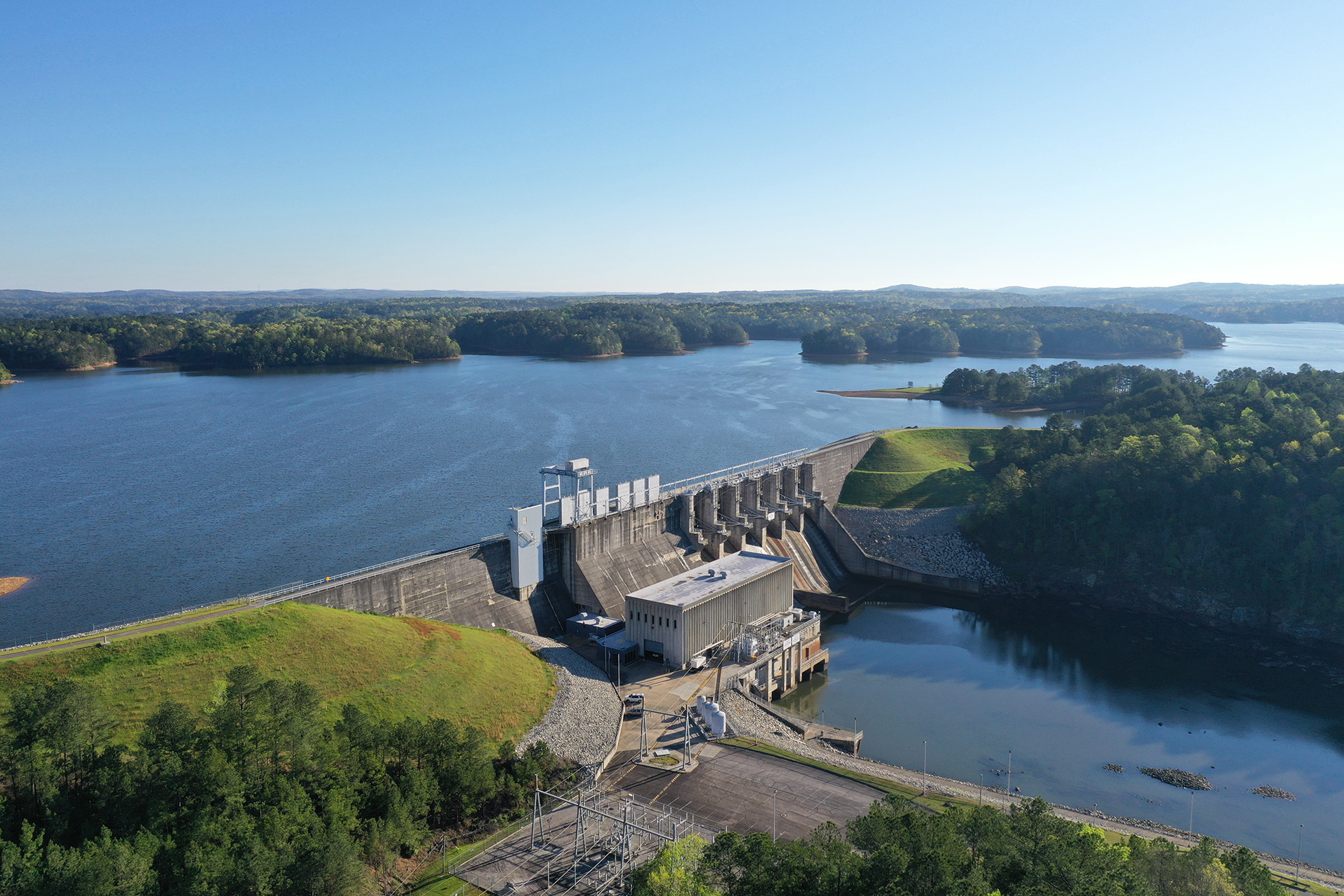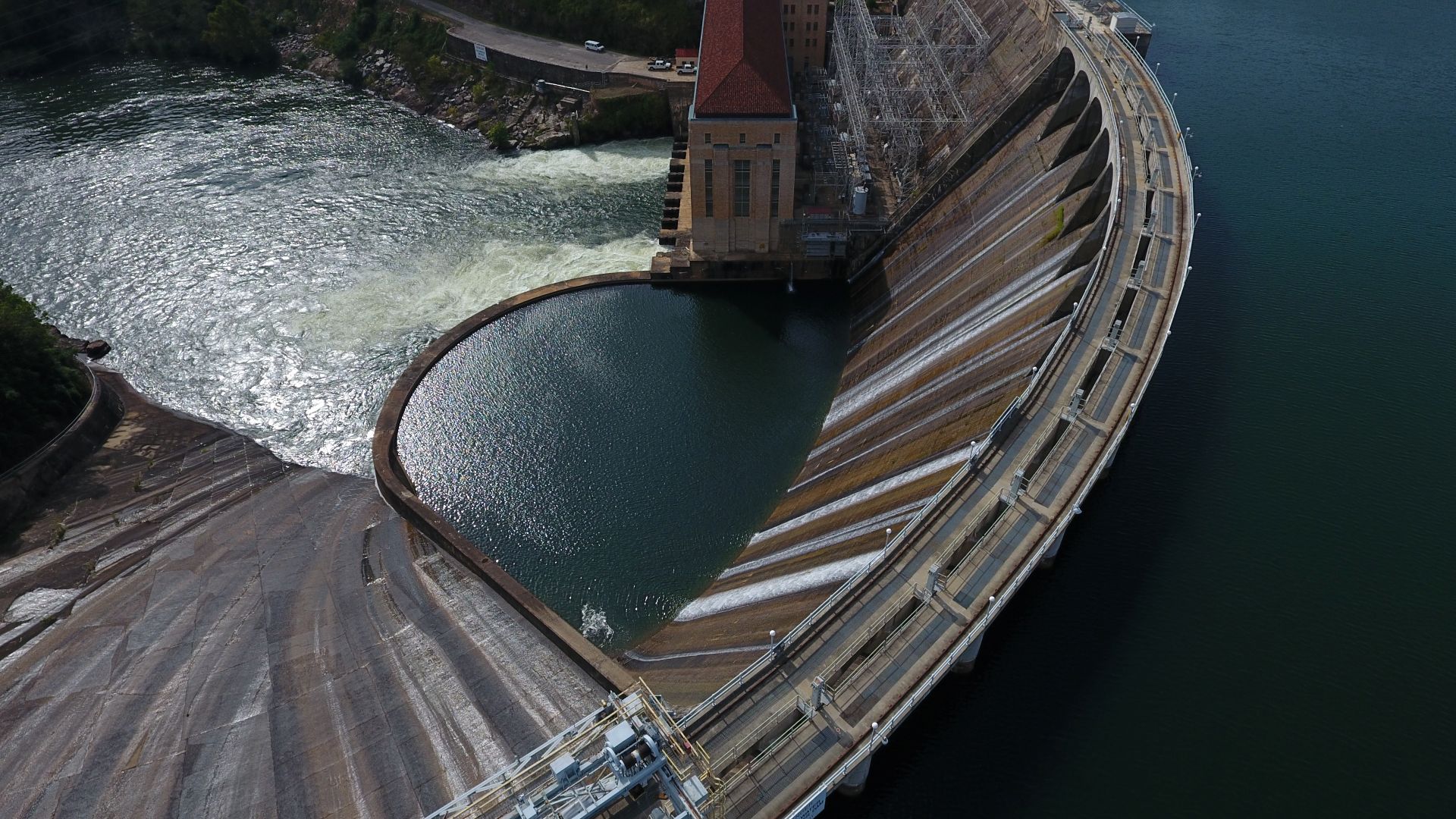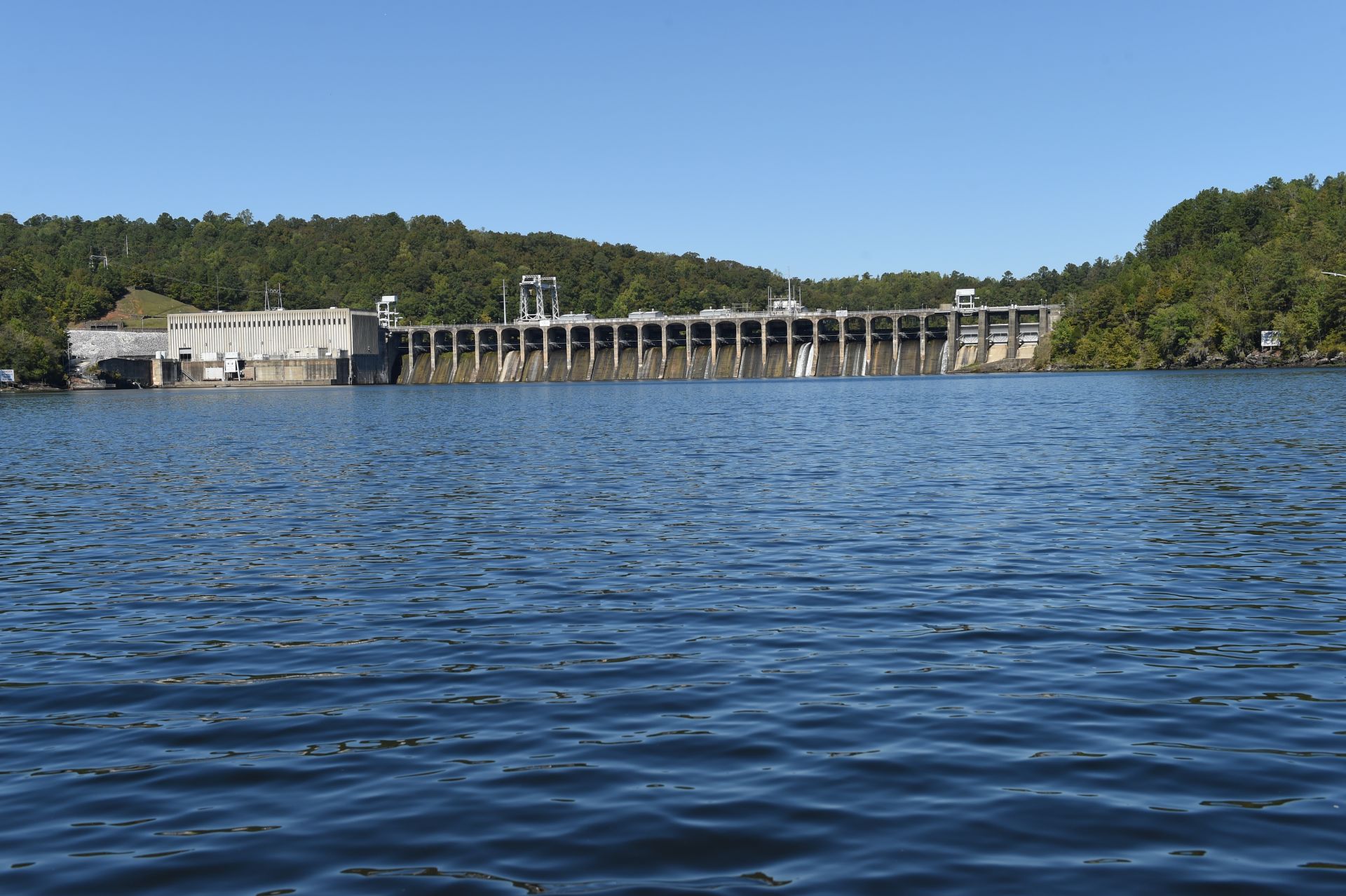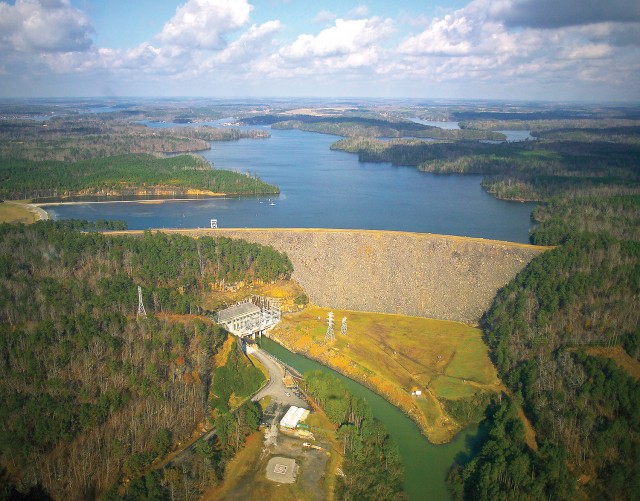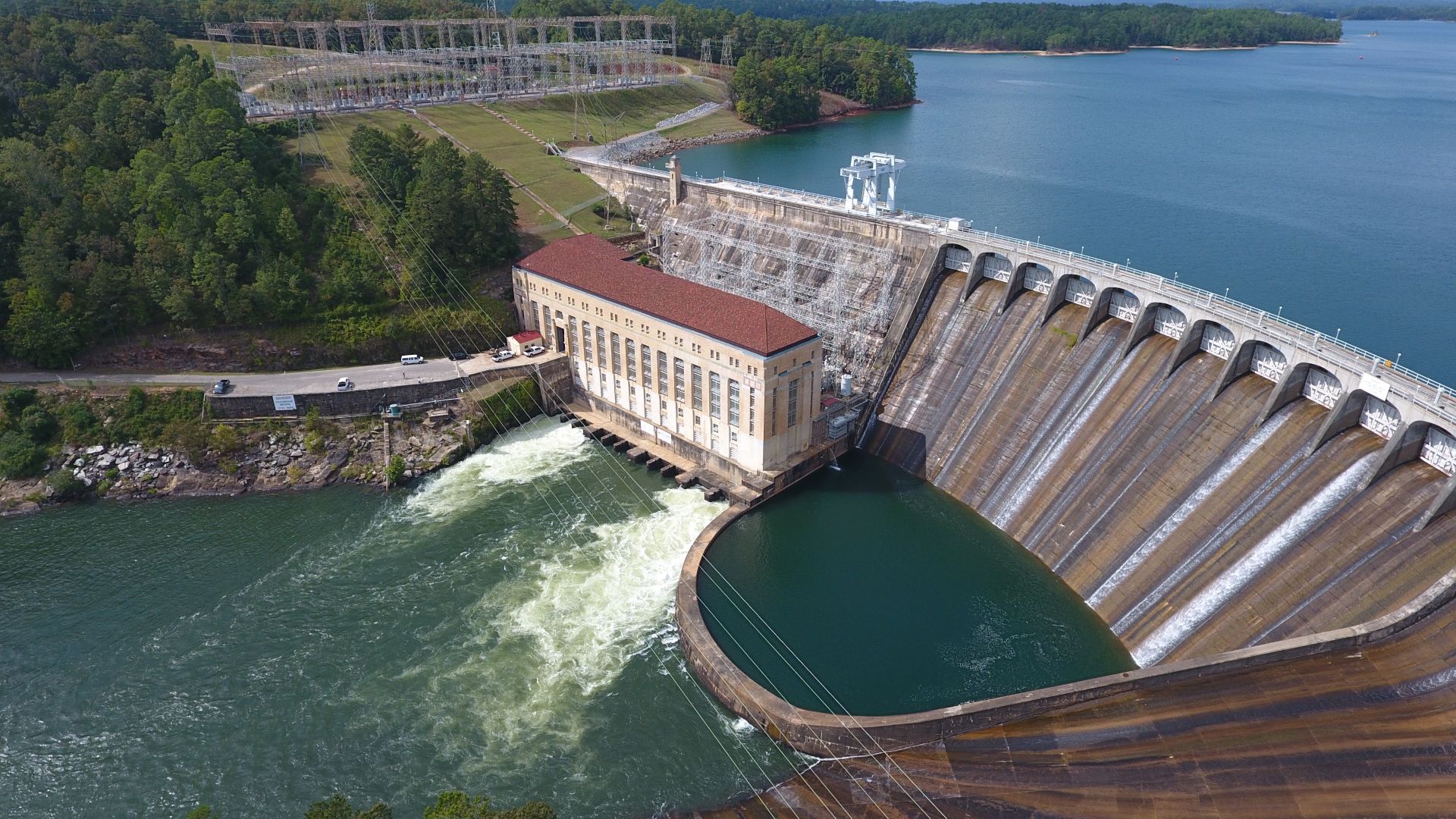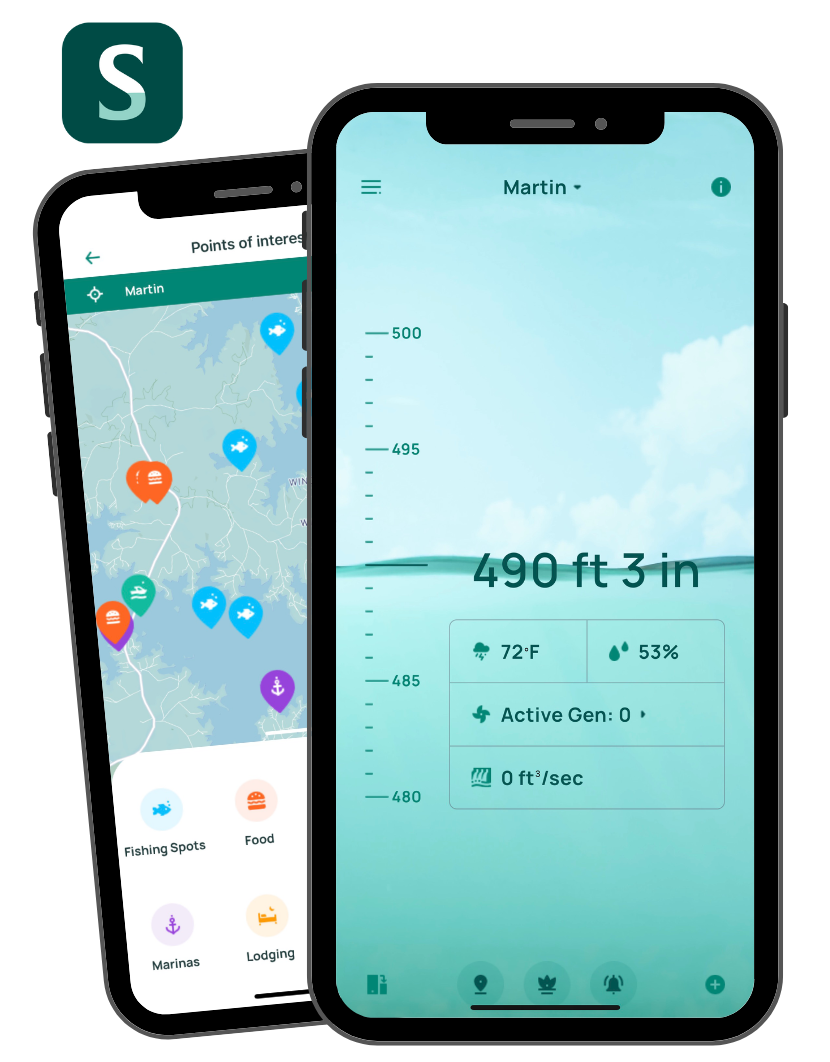Ever wondered why the water at your favorite lake is often higher or lower than when you last visited?
Alabama Power operates two kinds of lakes: 1) Run of River, and 2) Storage. Lay, Mitchell and Jordan lakes on the Coosa River, Yates and Thurlow lakes on the Tallapoosa River, and Bankhead and Holt lakes (owned by the U.S. Army Corps of Engineers) on the Warrior River are called “run-of-river” projects that discharge essentially the same amount of water that flows into them. This type of operation gives them a fairly consistent lake level year round. These lakes were not designed with flood control as a specific project purpose. Alternatively, “storage” projects like Weiss, Henry, and Logan Martin lakes on the Coosa River, Harris and Martin lakes on the Tallapoosa River, and Smith lake on the Warrior (Sipsey) River provide seasonal storage, having different summer and winter pool levels, and are drawn down late fall into the winter to provide a means of managing and storing winter/spring rains. These operations provide a measure of protection against downstream flooding during high flow events. These storage projects normally have their levels returned to summer pool levels during the spring timeframe. Water stored in these storage lakes can also help mitigate some impacts of drought by providing a limited source of water for use when it is scarce, such as during drought periods.
The need for water in summer and fall can often exceed the natural supply. Most big lakes also operate for many other reasons — hydropower, recreation, navigation and the environment. Each of these purposes can factor into whether water is released, causing a fall in lake levels particularly during the late summer and fall periods.
Floods are normally the cause of the greatest and quickest changes in lake levels. Heavy rains produce floods that can raise a lake level several feet overnight. When floods are over, it is important to get the lake ready to store water from the next flood that may come along, and that is done by returning the lake to its normal level.
Operating Guide
The Federal Energy Regulatory Commission along with the U.S. Army Corps of Engineers help determine the operating curves, called a Guide, for the storage lakes managed by Alabama Power, which is the maximum elevation at which Alabama Power may maintain the reservoir under normal conditions. The operating Guide begins in January at a winter pool elevation and then rises during the late winter into early spring to summer pool elevation. The Guide remains the same throughout the summer months, which supports recreation use on the lakes. In fall and early winter, the Guide declines to make room for normal winter and spring flood flows. In general, the operating guide provides the guidance needed for both flood control operations and daily water management decisions.
Lake Conditions
Lake elevations are always subject to change, depending on conditions.
Special Operations
During the winter and spring months, when rainfall is more frequent for our area, rain events can cause changes to lake elevations, sometimes very quickly. And spill gates at the dams are subject to opening more frequently as well. Individuals that recreate below our dams and those with boats and water-related equipment and facilities on our lakes should always stay alert to changing conditions and be prepared to take the necessary steps to protect their property.





